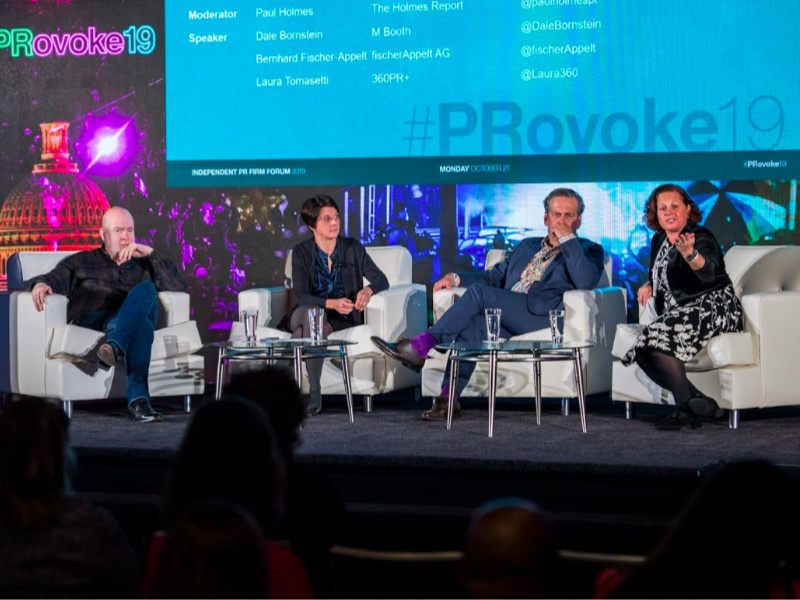Diana Marszalek 22 Oct 2019 // 12:27AM GMT

WASHINGTON — In expanding their content creation offerings, PR agencies are not only offering clients new capabilities but also new approaches to harnessing creative in ways that leverage some of the industry’s greatest strengths, according to a panel of industry insiders.
“It goes back to data insight and really digging deep into what resonates at the human level and then being able to take that insight to create content,” said M Booth CEO Dale Bornstein, who has seen the agency’s creative staff grow from one part-timer to a 35-person team that pushes out 125 pieces of content weekly for client Google alone. “We understand that if you dive deep into insight and really understand the target audience and start there, the actual content is more interesting.”
Bornstein’s comments were part of a panel discussion exploring the creative agency of the future — and what firms are currently doing to bring that to fruition — at the Entrepreneurs' Forum that got PRovoke19 underway in Washington. Fellow panelists were 360PR+ CEO & founder Laura Tomasetti and fischerAppelt AG CEO Bernhard Fischer-Appelt.
For Bornstein, ramping up M Booth’s content creation capabilities has been part of the natural evolution of the company in keeping with client demands and stiff competition from the likes of ad agencies — precipitated by serving Google in a multitude of ways. “We’re not going to say we can do something if we can’t. But we certainly will (try to) figure it out,” Bornstein said.
Having those creatives in-house, however, has done more for M Booth than grow capabilities, as they bring with them different perspectives that influence output. "When you hire creatives today, they are so passionate in so many areas you will be surprised what they do. You have to unleash their passions," she said.
It also serves clients in ways that other kinds of creative agencies can’t, thanks to the multiple stakeholders that PR agencies serve.
Tomasetti agreed. “PR firms can be stronger than ad firms because we do think of those multiple touchpoints (as opposed to) that 30-second or banner ad,” she said.
Tomasetti said she has a long history of integrating creative capabilities but has stepped it up over the last few years, building an in-house studio and hiring a creative director from McCann. Between the two moves, she said, 360PR+ is able to produce a range of content, from big video pieces to the daily bits that are “filling the pipeline constantly for clients.”
Making such strategic investments have been instrumental in changing the firm’s mindset to knowing “what we can pull off with confidence.”
“At the end of the day we are still responsible for brand narratives and owning that and pulling that through for our clients,” she said.
Fischer-Appelt expanded his firm’s creative capabilities in a different way: acquiring an advertising firm. In doing so, he said, it created a firm that can harness the particular but different expertise of the advertising and PR worlds, to offer clients the type of risk-taking creative campaigns that reap results. “Our culture is diversity,” he said.
“PR, advertising, data and digital people have the same tools, but different cultures and different ways of thinking, and if they can work together, it pays off.”


































.jpg)






.tmb-135x100.jpg)











